Abstract
A study was conducted in 4 Canadian processing plants in 1995-96 to determine the prevalence of quality defects in Canadian cattle. One percent of the annual number of cattle processed in Canada were evaluated on the processing floor and 0.1% were graded in the cooler. Brands were observed on 37% and multiple brands on 6% of the cattle. Forty percent of the cattle had horns, 20% of which were scurs, 33% were stubs, 10% were tipped, and 37% were full length. Tag (mud and manure on the hide) was observed on 34% of the cattle. Bruises were found on 78% of the carcasses, 81% of which were minor in severity. Fifteen percent of the bruises were located on the round, 29% on the loin, 40% on the rib, 16% on the chuck, and 0.02% on the brisket. Grubs were observed in 0.02% of the steers, and injection sites were observed in 1.3% of whole hanging carcasses. Seventy percent of the livers were passed for human food and 14% for pet food; 16% were condemned. Approximately 71% of the liver condemnations were due to liver abscesses. Four percent of the heads, 6% of the tongues, and 0.2% of whole carcasses were condemned. The pregnancy rate in female cattle was approximately 6.7%. The average hot carcass weight was 357 kg (s = 40) in steers, 325 kg (s = 41) in heifers, 305 kg (s = 53) in cows, 388 kg (s = 62) in virgin bulls and 340 kg (s = 39) in mature bulls. The average ribeye area in all cattle was 84 cm2 (s = 12); range 29 cm2 to 128 cm2. Grade fat was highly variable and averaged 9 mm (s = 4) for steers and heifers, 6 mm (s = 6) for cows, 5 mm (s = 1) for virgin bulls, and 4 mm (s = 0.5) for mature bulls. The average lean meat yield was 59.7% in cattle (s = 3.4); range 39% to 67%. One percent of the carcasses were devoid of marbling, 1% were dark cutters, and 0.05% of the steer carcasses were staggy. Six percent of the carcasses had poor conformation, 3.7% were underfinished, and 0.7% were overfinished. Yellow fat was observed in 4% of the carcasses; 10% of carcasses were aged. Based on January 1996 prices, the economic analysis showed that the Canadian beef industry lost $70.52 per head or $189.6 million annually from quality nonconformities. Methods identified to reduce these nonconformities included improvements in management, animal identification, handling, genetic selection, marketing, grading, and information transfer.
Full text
PDF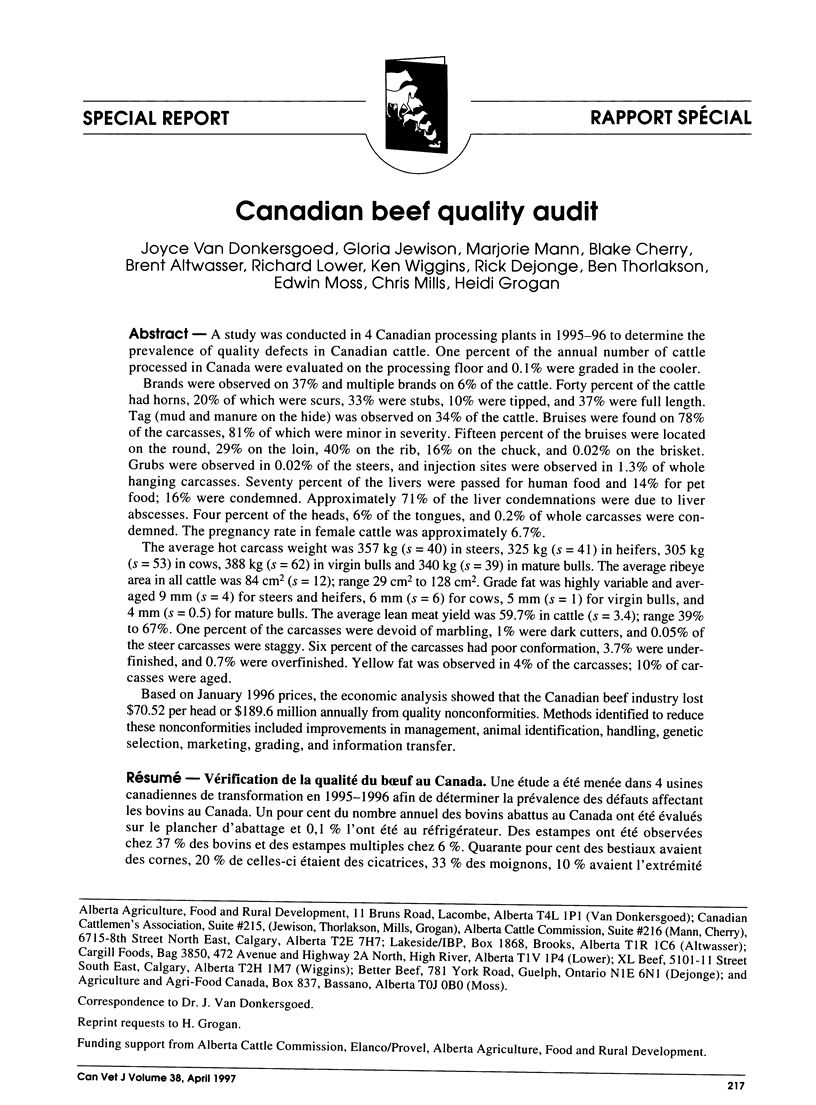
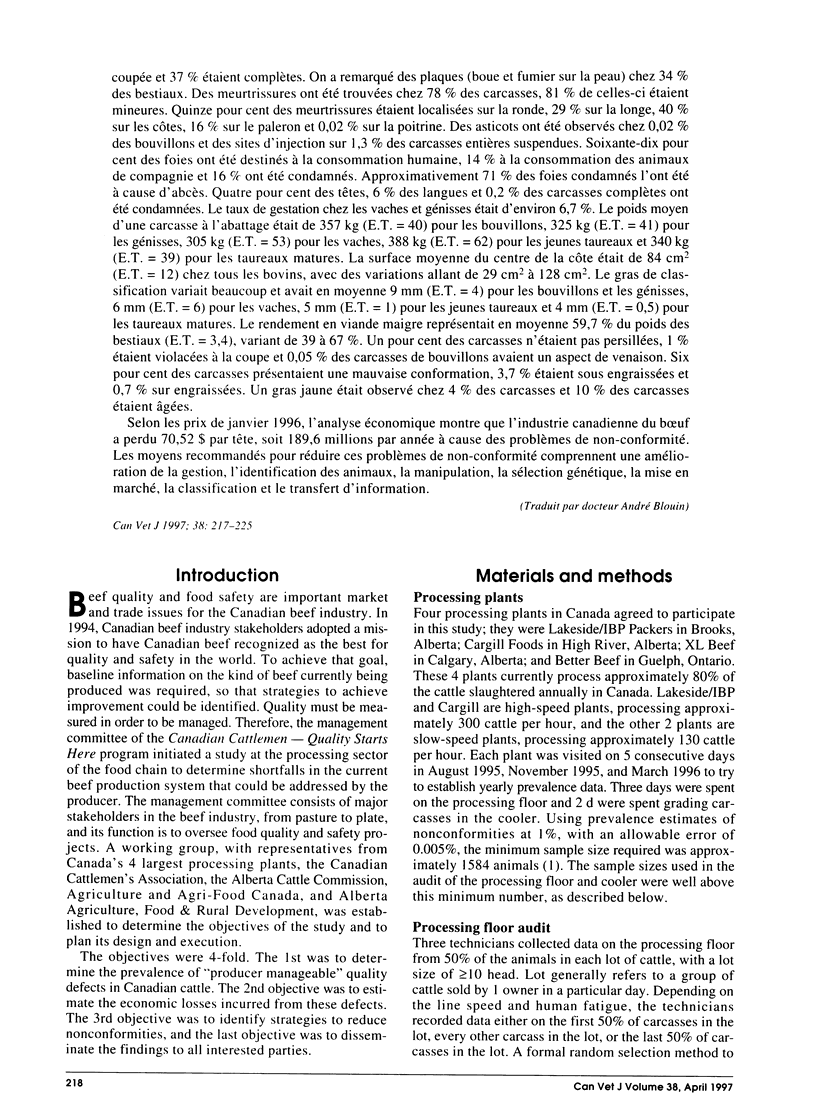
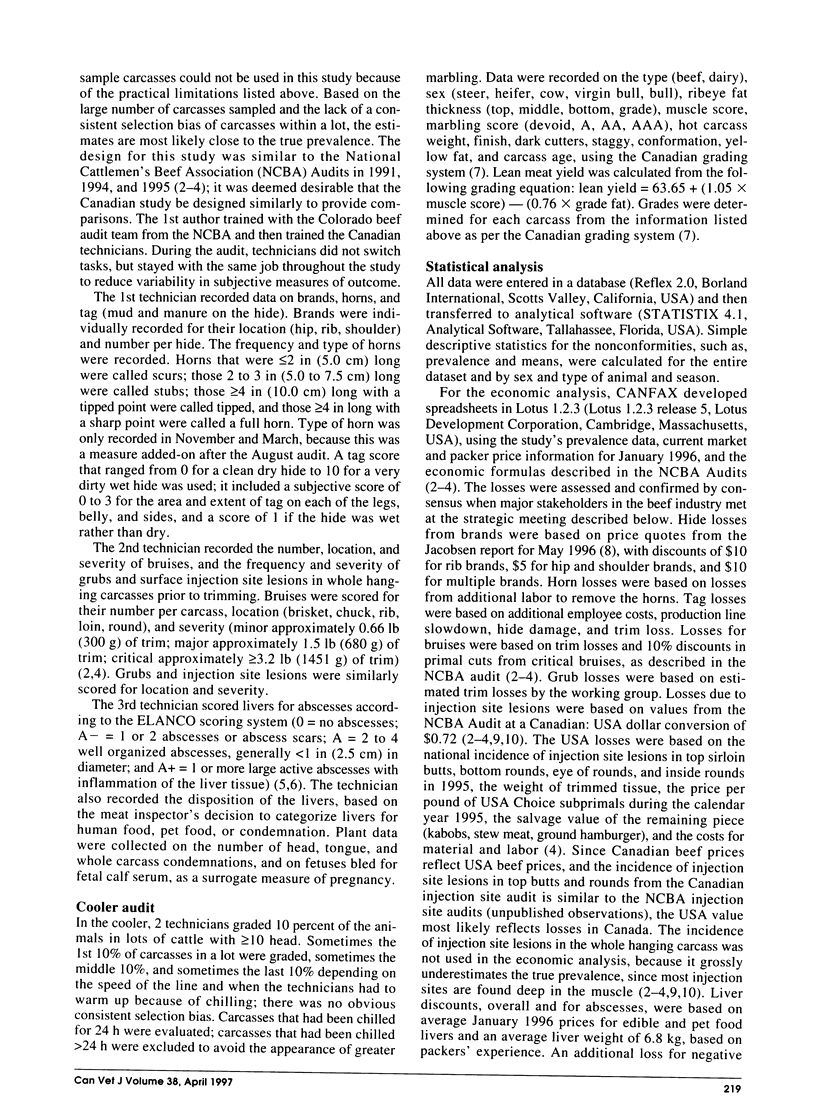
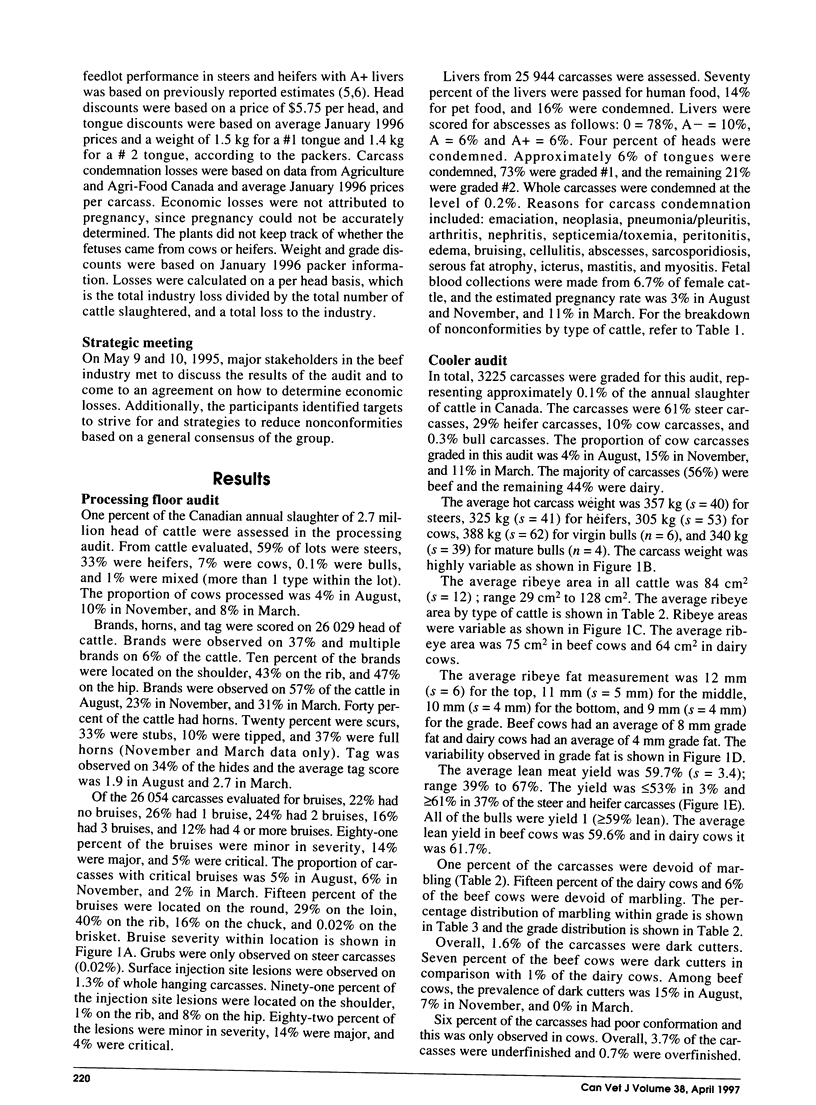
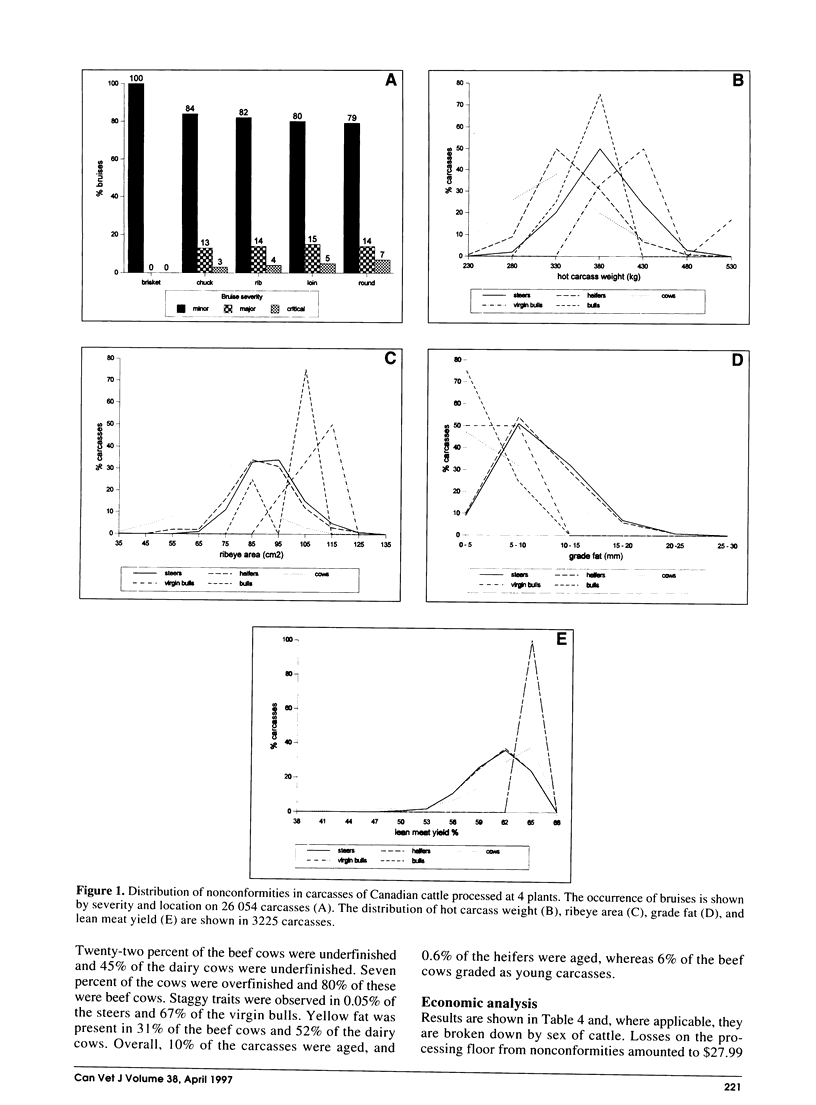
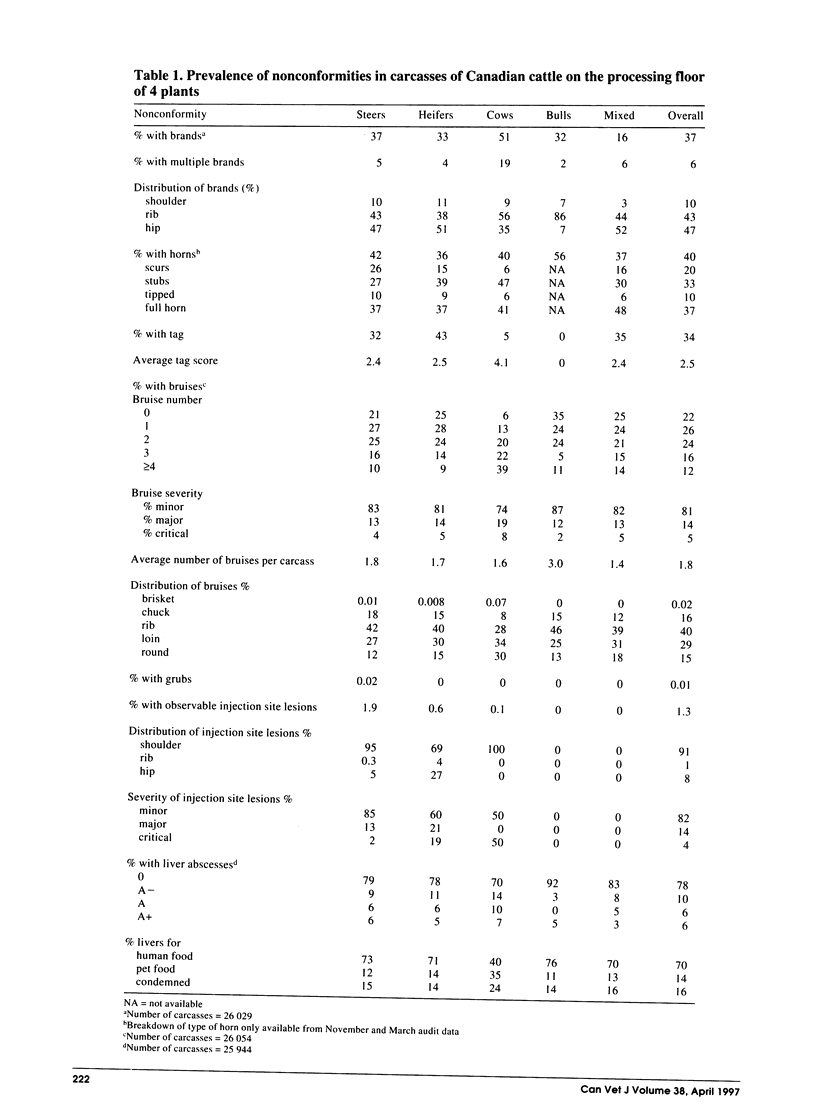
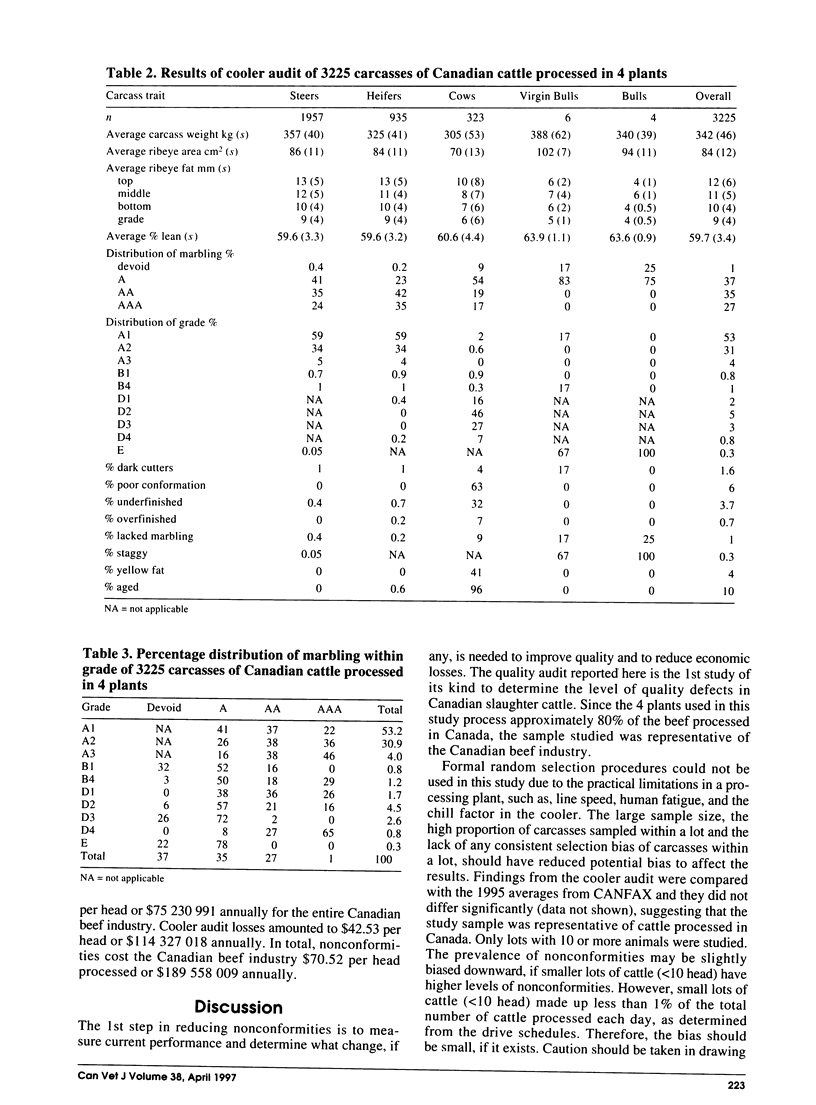
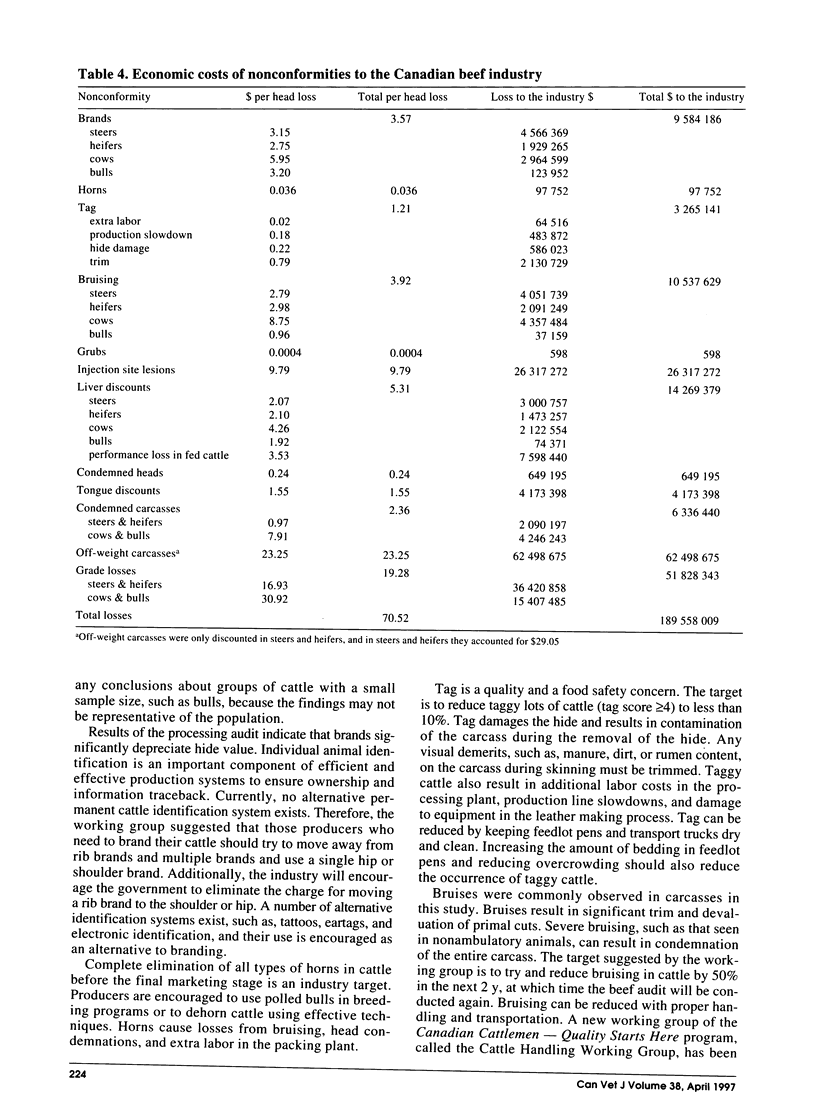
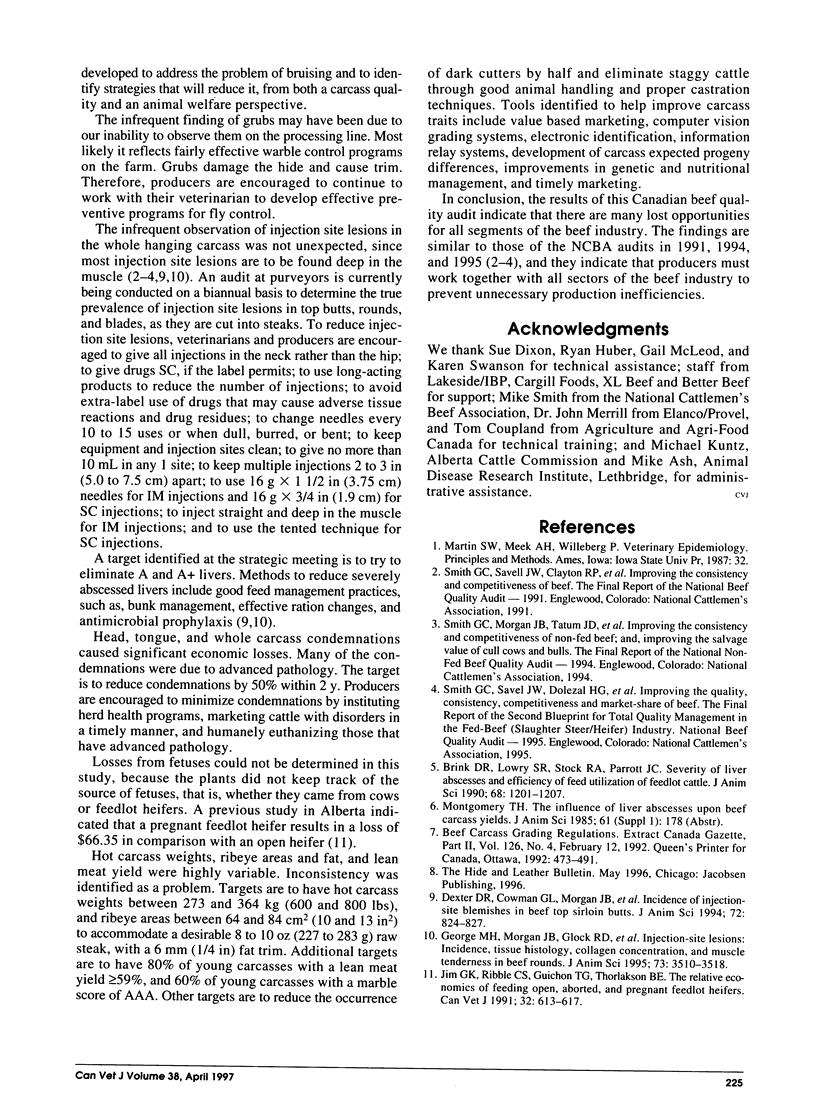
Selected References
These references are in PubMed. This may not be the complete list of references from this article.
- Brink D. R., Lowry S. R., Stock R. A., Parrott J. C. Severity of liver abscesses and efficiency of feed utilization of feedlot cattle. J Anim Sci. 1990 May;68(5):1201–1207. doi: 10.2527/1990.6851201x. [DOI] [PubMed] [Google Scholar]
- Dexter D. R., Cowman G. L., Morgan J. B., Clayton R. P., Tatum J. D., Sofos J. N., Schmidt G. R., Glock R. D., Smith G. C. Incidence of injection-site blemishes in beef top sirloin butts. J Anim Sci. 1994 Apr;72(4):824–827. doi: 10.2527/1994.724824x. [DOI] [PubMed] [Google Scholar]
- George M. H., Morgan J. B., Glock R. D., Tatum J. D., Schmidt G. R., Sofos J. N., Cowman G. L., Smith G. C. Injection-site lesions: incidence, tissue histology, collagen concentration, and muscle tenderness in beef rounds. J Anim Sci. 1995 Dec;73(12):3510–3518. doi: 10.2527/1995.73123510x. [DOI] [PubMed] [Google Scholar]
- Jim G. K., Ribble C. S., Guichon P. T., Thorlakson B. E. The relative economics of feeding open, aborted, pregnant feedlot heifers. Can Vet J. 1991 Oct;32(10):613–617. [PMC free article] [PubMed] [Google Scholar]


